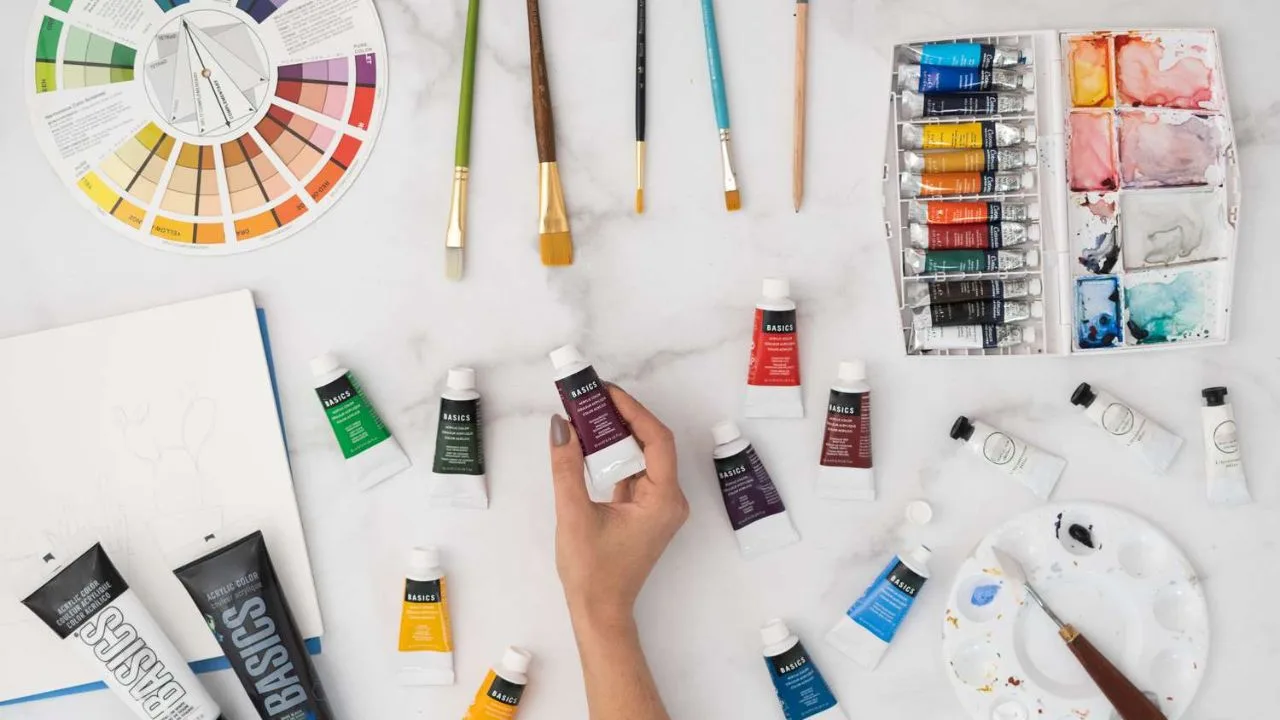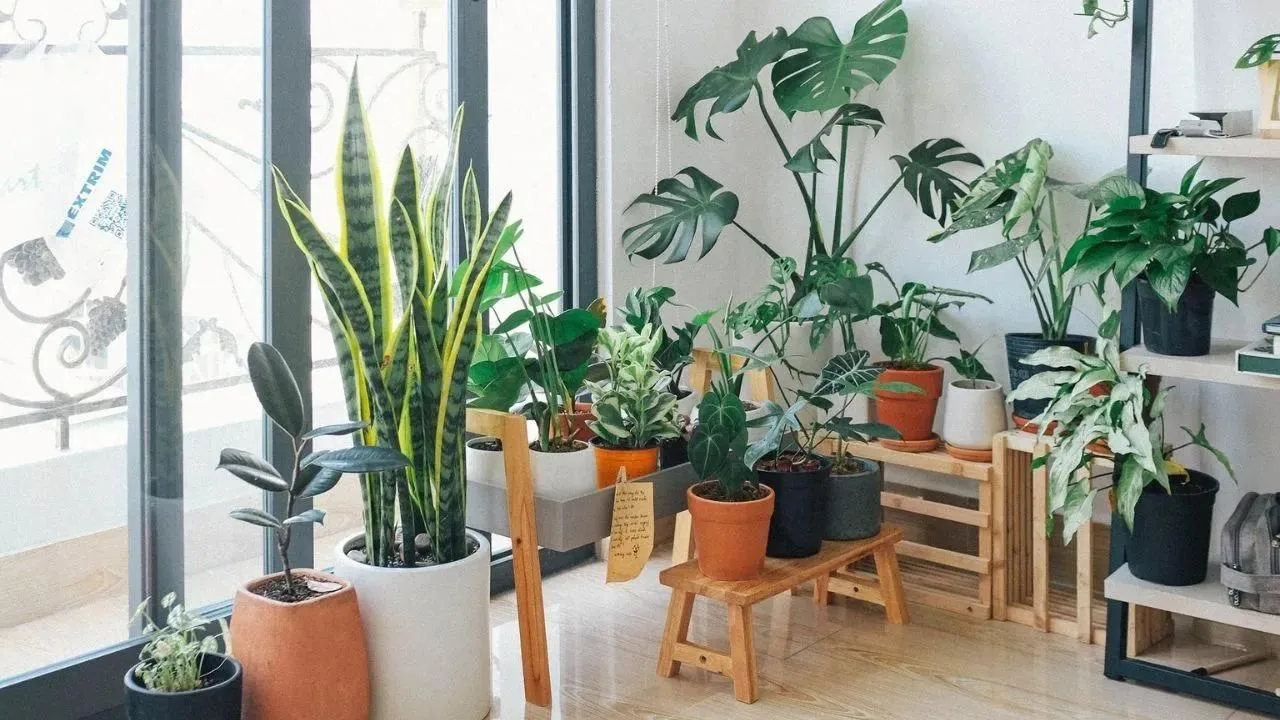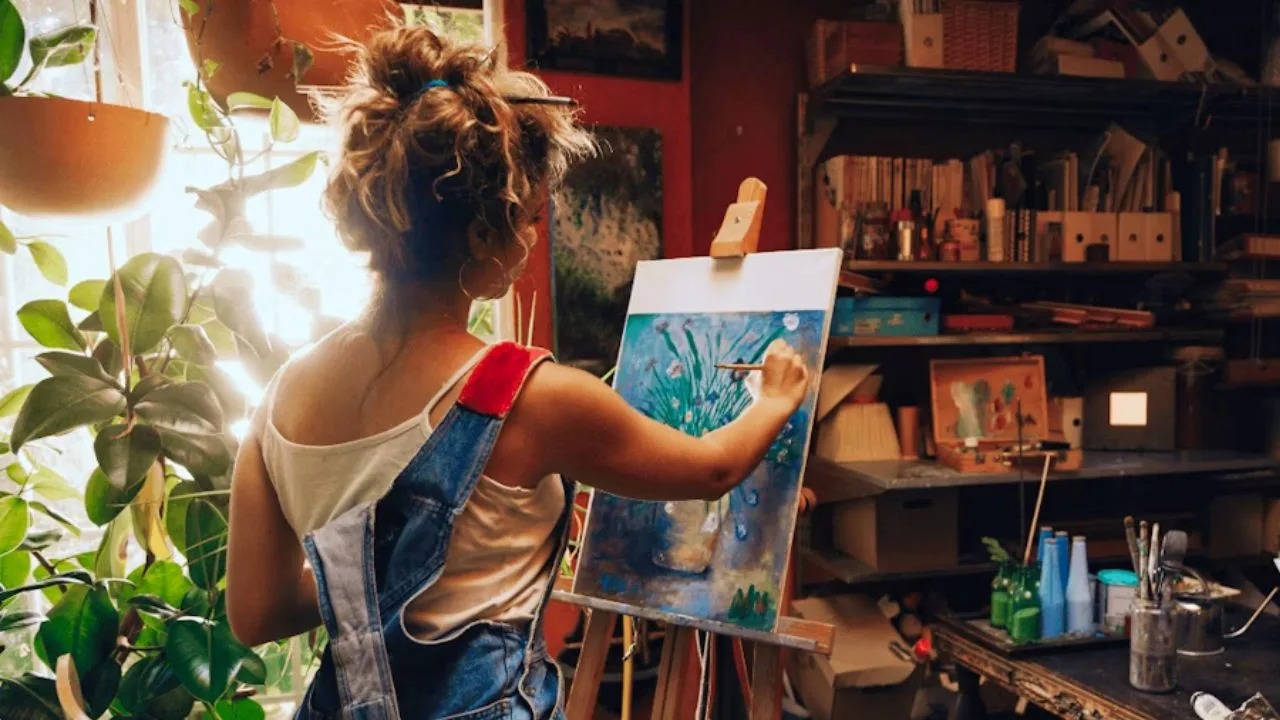Learn Painting – Painting is a wonderful way to express yourself and explore your creativity in painting, the expression of ideas and emotions, with the creation of certain qualities, in a two-dimensional visual language.
The elements of this language—its shapes, lines, colors, tones, and textures—are used in various ways to produce sensations of volume, space, movement, and light on a flat surface.
These elements are combined into expressive patterns to represent real or supernatural phenomena, interpret a narrative theme, or create wholly abstract visual relationships.

Basic List Paints
• Paints: Start with acrylic paints because they’re easy to use and dry quickly.
• Brushes: Get a variety of brushes in different sizes.
• Canvas or Paper: For acrylic paints, you can use canvas panels or acrylic paper.
Watercolor paints require special watercolor paper
• Palette: Use a palette to mix your colors.
• Easel: An easel helps to hold your canvas at an angle, making it easier to paint.
Description
For your painting have an idea of what you want to paint, a basic still-life or a basic landscape painting is probably best. Do not pick complex subjects with many figures, focus on compositions with 2-3 items.
Start with Sketching
Before you start painting, it’s helpful to sketch your subject on the canvas. Use a pencil to lightly outline the basic shapes and composition. This will serve as a guide when you begin painting.
Color Planning
While that dries, we will organize our colors – which colors to use for the mountain, which house to use for the foreground
Keep a Sketchbook

A sketchbook is an invaluable tool for artists.
• Practice: Sketch regularly to improve your drawing skills and experiment with ideas.
• Experiment: Try new techniques and compositions in your sketchbook before committing to a final painting.
• Record Ideas: Jot down inspiration, color schemes, and concepts for future paintings.
Take Care of Your Tools
• Maintaining your painting supplies will ensure they last longer and perform better Clean Brushes: Wash your brushes thoroughly after each use. For acrylics, use soap and water. For oils, use a solvent.
• Store Paints Properly: Keep paints sealed to prevent them from drying out. Store them in a cool, dry place.
• Preserve Canvases: Store canvases flat or on a surface that won’t damage the paint.
Conclusion
Painting is a way to express ideas and emotions Artists use the elements of painting, such as color, line, shape, texture, and tone, to create sensations of movement, space, light, and volume on a flat surface.

